How to Care for Parakeets: A Complete Guide With All You Need to Know
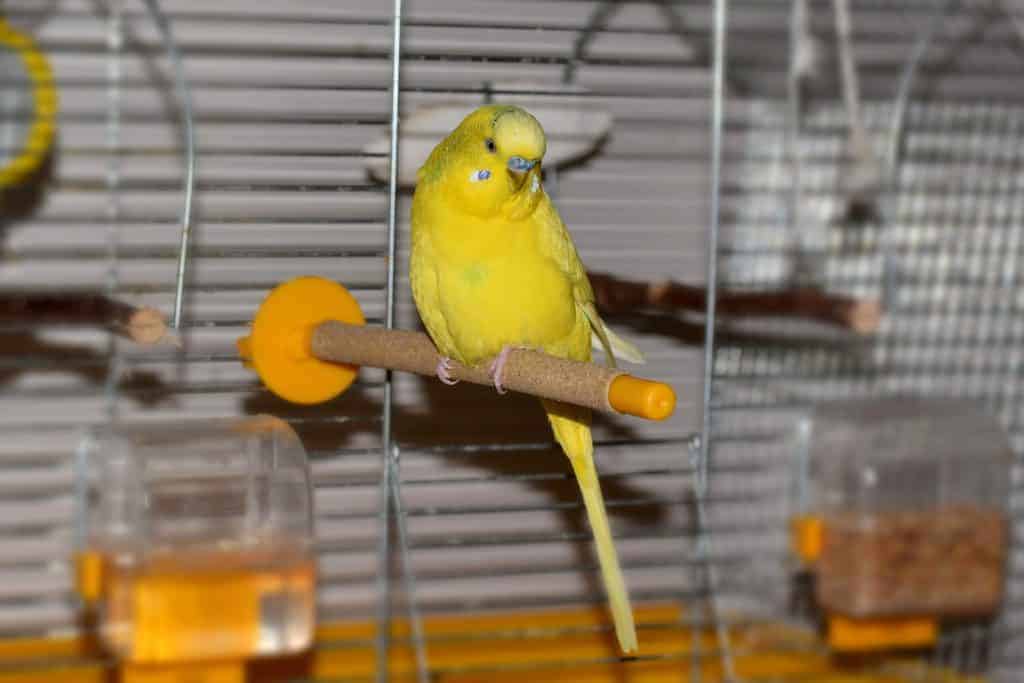
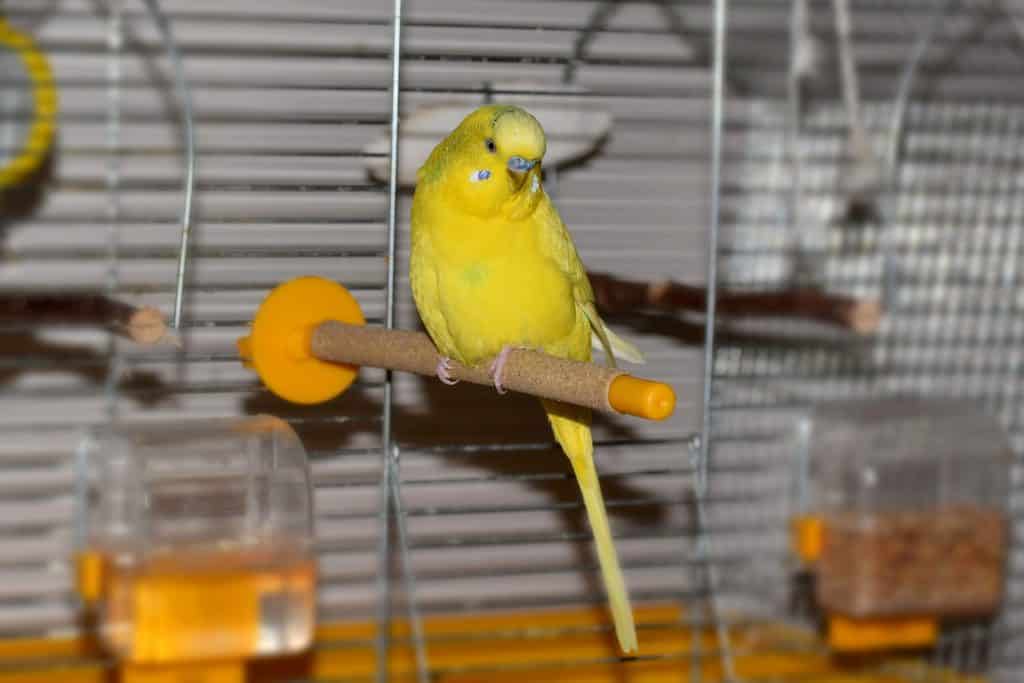
Learning how to take care of a parakeet can be a difficult task if you do not know where to start your preparations. But not to worry, it doesn’t have to be as complicated as you think! I decided to do some research on how to care for parakeets. It is a complete guide with everything you’ll need to know about these feathery friends.
When it comes to caring for a living, breathing animal you will need to make a list of immediate items to purchase for them. For Parakeets, that is a cage and much more. Searching for these items will not have to a hassle, in fact, if you continue reading you will have everything you need to know without stress!
Choosing Your Parakeet
Types of Parakeets
The types of parakeets to choose from are seemingly endless. Though the common choice is a classic Budgerigar Parakeet. If not that choice, then there are 100 others to choose from.
You can look into different kinds like Alexandrine Parakeets, Indian Ringneck Parakeets, Black-Tailed Parakeet or any other parakeet that is available for purchase where you live.
A Budgerigar Parakeet (also known as a Budgie) originated in Australia, so if you happen to live in Australia then this choice of bird is probably the most cost-effective.
MY LATEST VIDEOS
Choose a Reliable Breeder
Just as you would with going about getting a dog, or a cat you want to find a reliable breeder that will guarantee a healthy parakeet.
A way to figure this out for sure is to simply check online reviews to get extra feedback. You can also ask the breeder to see the other birds,
You can watch to see that the birds aren’t overcrowded in the cage or on the perches. Be sure to also look at the fruits and vegetables that the breeder has out in the cage. Make sure that it’s fresh, and that there is some cuttlebone block in the cage.
Pick a Healthy Parakeet
Now that you have found your breeder, go ahead and look for a healthy parakeet!
A way to do this is by looking for a bright-eyed and lively parakeet! you can check to see that there is no crusting around the cere (which is the fleshy part above the beak). Make sure the vent is clear too.
The
You want your bird to look happy, and at its optimal health. To ensure this, you can visit at different times during the day. But plan accordingly since parakeets will take naps and once they wake they will look a bit drowsy.
Consider Taking Home a Pair
Parakeets are sociable creatures who enjoy being ins grouped settings. I would highly recommend having a pair to bring home with you.
There will be times during the day where you cannot spend every second with your bird, so letting them have some company will be the best thing for them.
Though, if you decide to get more than just a pair, please be conscientious of the birds you are putting together in the cage. You should only have parakeets living with one another.
Take Your Parakeet(s) to The Vet
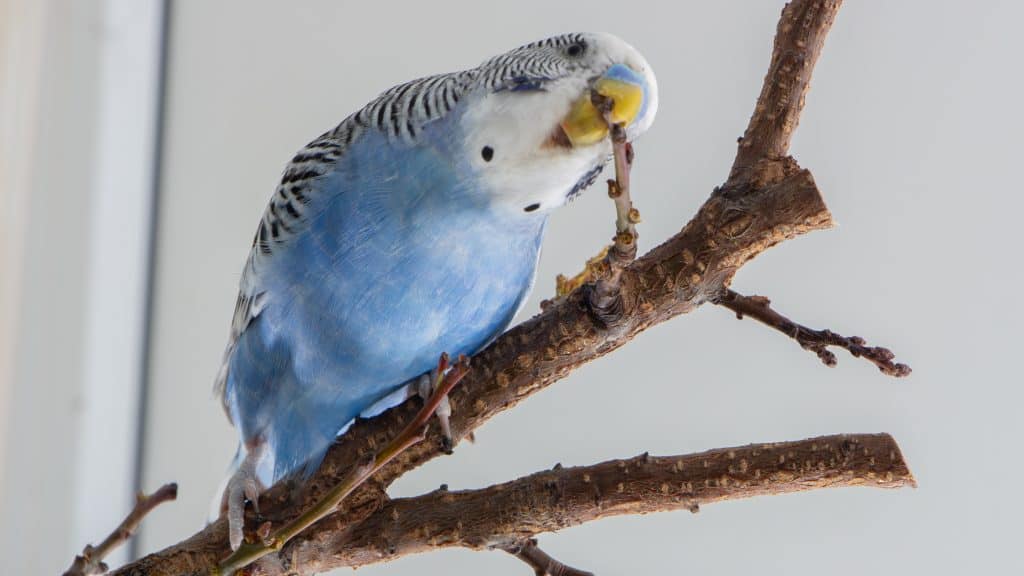
Even if your parakeet is healthy as can be, there is still the off chance that they can become ill. And their symptoms will not become evident until they become serious.
So, it is important to have your new parakeet looked at by your vet as soon as you can right after getting it. The vet will check for any symptoms of any illnesses your parakeet might be susceptible to.
They will also test for any external or internal parasites that can affect them.
Making Their Home
Choosing a Cage
The task of choosing a cage for your bird to be able to comfortably roam around in all comes down to the size of it. You need to make sure it is big enough for your parakeet to fly a
You will want to make sure the measurements, horizontally, is correct because birds will fly horizontally rather than upward as you may think.
Choosing the material of the cage is important as well. You want something that is stainless steel because other metals can be toxic to parakeets. And you should never have a rusty cage or one that has chipping paint.
Never buy your parakeet a circular cage, that can lead to injuries since there won’t be enough flight space for your parakeet.
Horizontal bars are the way to go when choosing a cage since parakeets love to climb around the cage.
Durability
This goes right back to the type of material you want your cage to be. Stainless steel is a recommended material but it is not the only material you can purchase.
Since stainless steel is an expensive choice you can choose plastic instead, or wrought iron and metal. Though, be sure to check whether these metals are something your bird is comfortable in.
Cleaning Tray
This aspect of a cage is one of the most important ones simply because you do not want to create a bacteria cesspool in your bird’s cage. Make sure to be aware of how frequently you clean out the bottom of the cage.
Feeders and Perches
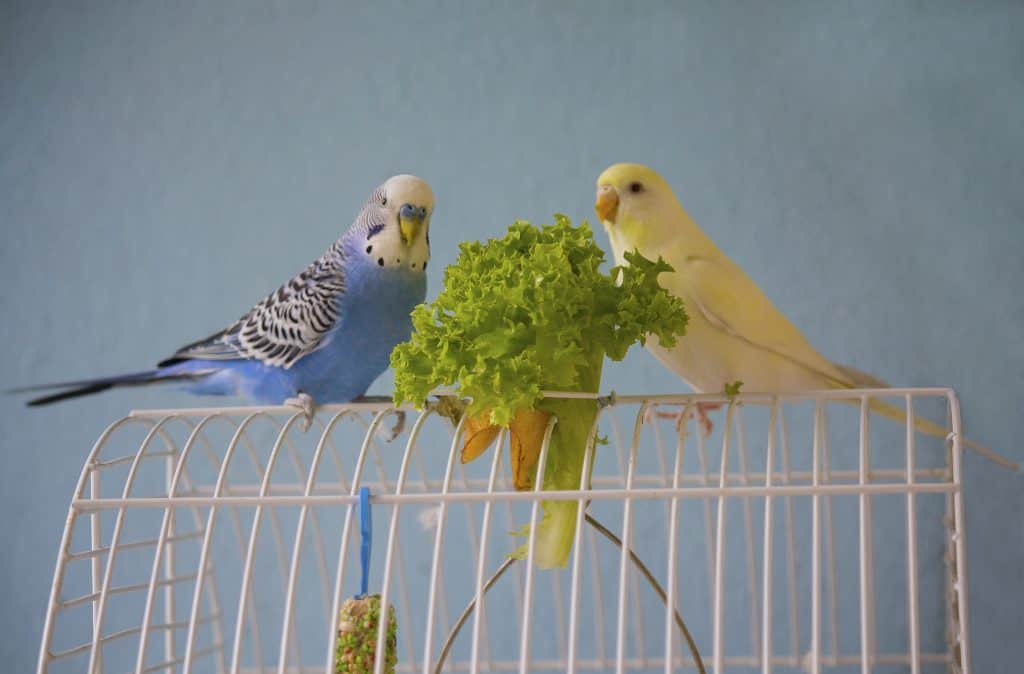
Feeders and perches are simply needed for a bird to feel relaxed and comfortable in their living space.
Most feeders and perches are safe for use and there are different kinds made of different materials, so it is up to you as the owner to choose the kind you want.
Small Wire Space
Be careful with the amount of space you have in between the wires of your bird’s cage. When you first bring your bird home they will try to make an attempt on escaping since they are insecure.
That is why it is recommended for you to have a small amount of space in between the wires, just enough for your bird to hold onto.
Colors
The color of the cage has no ef
And there is a surprising variety of colors to choose from when looking into parakeet bird cages.
Hygiene Precautions
Birds create their own germs. And they do this by their own waste. If their waste is kept inside their cage for a long time then the germs start to grow and multiply and eventually spread to the entirety of the cage.
You should always clean up the waste your birds drop.
At least once a week you should spray the cage with an anti-germ liquid, and if you fail to do this at least once a month the germs can make your bird become ill.
For the well-being of your bird, use the spray.
Before you use the spray (if
You should spray the cage and leave it for at least 10 minutes before wiping it down and placing your birds back inside.
Have a Food Bowl and Water Drinker Attached
This is important to have in any bird cage though something to be aware of is to have the food bowl and water drinker mounted to the bars of the cage. Having them mounted keeps the bowls away from the bottom of the cage.
And that keeps the bowls from being tipped over or having any of the birds waste fall into it.
If you happen to have more than one bird in a cage make sure to have a separate food bowl for each of them so that the bird who has more of a dominant characteristic won’t fight the others for food.
Bring in Some Toys
Parakeets are an energetic bunch, and they will need some mental stimulation within their cage. You can provide this by bringing in various kinds of parakeet toys.
Parakeets enjoy toys with mirrors attached, bells, and ladders to climb upon.
Overall, toys are needed in order for your parakeet to maintain their health, and it is an easy way to keep them entertained.
Feeding Your Parakeet
Your parakeet’s diet will be an important aspect to their overall happiness, a parakeet that is well fed will grow into a happy and healthy bird. It is important to treat your parakeet with care since they are a living, breathing animal.
Seed Mixtures
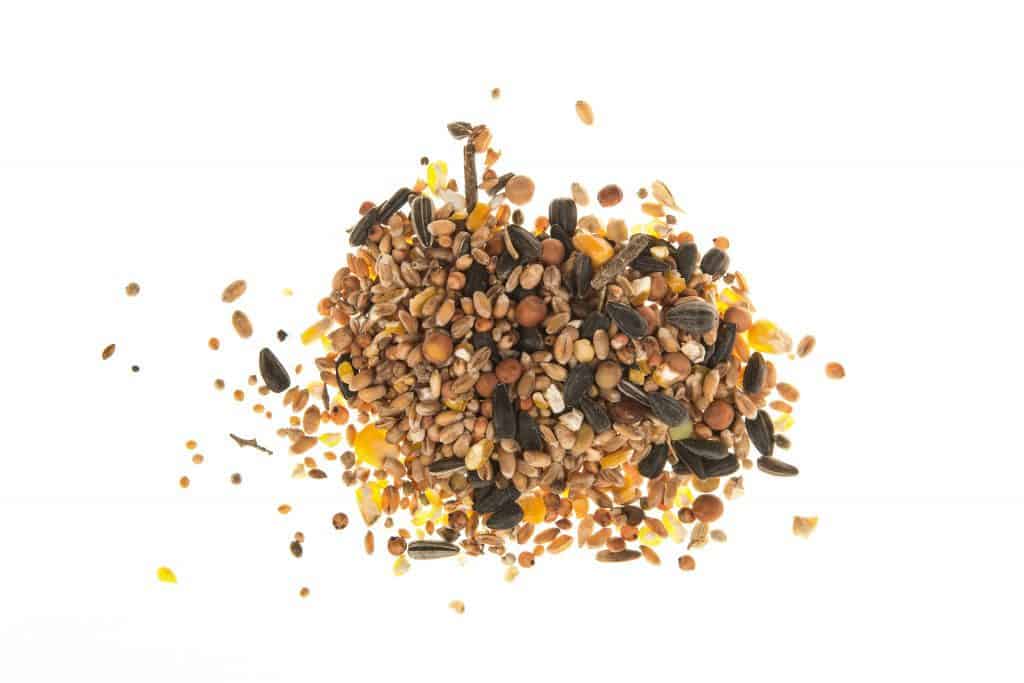
Seed diets offer a good mix to a Parakeets somewhat basic diet. They can receive a mix of components that will benefit their health. Vitamin pellets, dried fruit,
Though, even the very best of seed mixtures do not offer everything your parakeet needs for optimal health. So keep in mind this seed mixture is just apart of your bird’s core nutrition.
You can provide a small dish for your bird to nibble on throughout the day and since parakeets only eat the top layer you will have to empty out the seed dish at the end of every day.
You can also clean the food dish completely after every couple of days to ensure that there will be no lingering bacteria growing in their food.
The Pellet Diet
Your Parakeet can do well on a diet of pellets.
Feeding your parakeet a diet of seed is common for the parakeets that are surviving in the wild. Though, that diet can also be a place where bacterial infection can grow and cause the lifespan and health of your pet to lower.
You should highly consider having your parakeet’s diet consist of pellets (only 60-70%). Most birds can adapt rather well to pellets. Though, fair warning some may reject them as well.
It can take two weeks for your bird to become completely converted to the diet of pellets. As most birds (about 90%) become converted as well.
A way to help the conversion of your bird you can follow this plan:
- You can give your bird(s) seed for about an hour in the morning and an hour at night.
- The time in between their morning and night feed you can let them snack on pellets.
- If your bird doesn’t switch in about two weeks then they will eventually switch after a short amount of time of going back to their seed diet.
Another way to try and help your parakeet become used to eating pellets as apart of their diet is to simply mix their normal seed mixture and add in some pellets. You can gradually add more as time passes.
Give Fresh Food
You will also need to supplement your parakeet with seed mixes, fresh fruit, and vegetables.
Some fresh fruit or vegetables that will benefit the health of your bird alongside their diet of pellet and seed are:
- Kale
- Beets
- Peas
- Carrots
- Parsley
- Cooked yams
- Sliced apples
- Mandarin oranges
- Citrus (and anything else like it)
If you are conscious when mixing up the types of fruit and veggies your give your bird (this also means not giving them the same fresh food two days in a row) then they won’t suffer from any dietary overload.
Some tips to feeding them these kinds of fruits and veggies are:
- Clipping the apples or carrots into bars that way you bird can easily peck at it. (for any larger fruit or veggies you can chop them up or put them into a food processor.
Dangerous Foods

hocolate and avocado can be deadly for birds, so do not ever offer a taste to your parakeet even if they seem interested. An example of this would be candy bars or guacamole. The candy bar includes chocolate while the guacamole includes avocado. Therefore it should be avoided.
Some other foods to completely stay away from are: avocados, eggplants, apple pips, rhubarb, tomato plant leaves, and potato plant leaves. These foods can cause some serious harm to the insides of your bird.
Also, avoid things that could be harmful to humans in large doses as well. This is caffeine, alcohol, foods that are high in sugar and even fried food.
Since your parakeet is small, their bodies can become affected by foods listed above much faster and stronger than a person would be.
Before you start training your bird to be able to perch on your finger you should let it get used to the surroundings of its cage.
While it does this, be sure to change their food and water daily, so bacteria does not grow and they are able to enjoy their food while it is fresh.
You can occasionally offer treats to your parakeet. Sprays or Millet sprigs can be a parakeets favorite treat but it is important to not give them too much of it since it is a bit fattening.
Be sure to also avoid high volumes of oats or sweets since both can be quite fattening for your parakeet.
Cuttlebone for Parakeets
Cuttlebone can be purchased by many different brands that are on the market now. Though the very best cuttlebone is from Living World since it is clean, fresh, and the perfect shape for your parakeet to enjoy. It is also perfect for anyone with a low budget.
Cuttlebone is a great source of calcium your parakeet can draw from. it is also a fun way for them to be able to exercise their beak.
Tips to Keep Your Parakeet Healthy
- Always give your parakeet drinkable water, water that you, yourself would drink.
- If possible, let your birds fly around an enclosed space that way they can improve their mentality and it can help stimulate them.
- Give your parakeet fresh, germ-free, fungus free health food!
- If your birds happen to poop on the bird feeder you can change the feeder after you clean it well and refill it with water and food.
- When you purchase a new bird from the outside you have to keep them in a different room for a week to make sure that they are healthy.
- If you come from being outside you will want to wash your hands before you carry your bird that way any of the outside germs won’t harm them.
- Once a week you can spray the birdcage with germ killer liquid, and this liquid will be safe for your birds to be around.
- If a bird happens to get sick, and you have others living in the same cage you will want to transfer them into a different cage to avoid the other birds getting sick.
Other Aspects
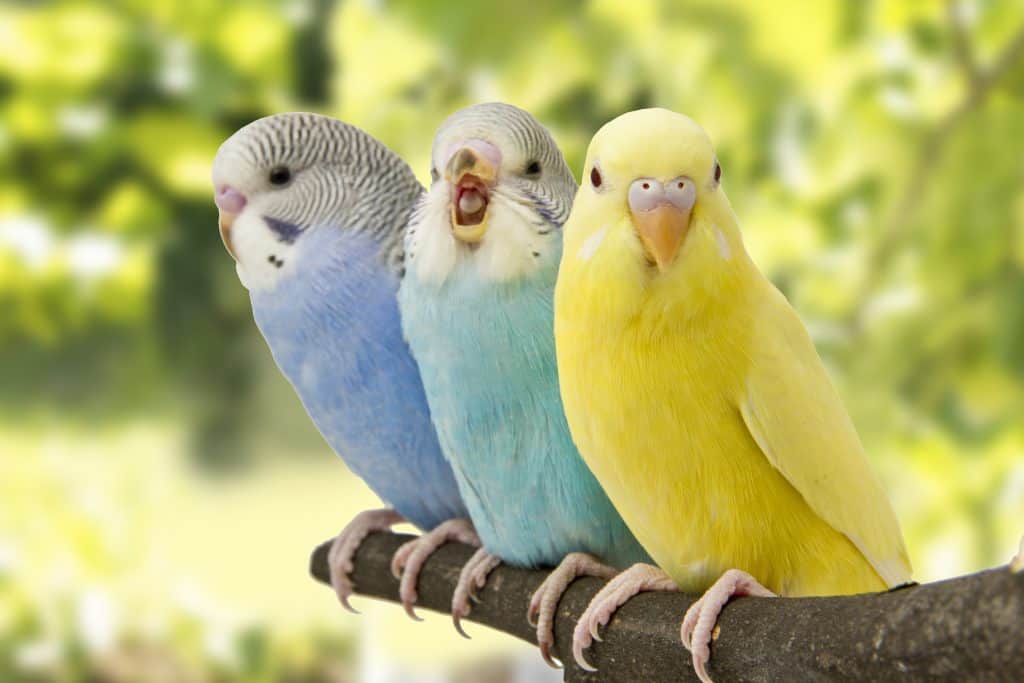
Socialization
Without regular attention, your parakeet can lose interest in human interaction. If you have more than one bird in the cage, both can become a pair and ignore humans together.
- Though if you make it a goal to interact with them often you can soon be considered apart of the flock!
- Some ways to interact with your bird is to bond by singing together. Sounds a bit silly, but they enjoy it! You can also learn to play games with them since they can come to enjoy the game once they pick up the moves.
- Happy talk (talking to the parakeet in an upbeat tone) is also a good way to help any parakeet who looks lonely.
Parakeets need company (especially if they are the only bird you own) so be aware that you will need to spend at least 90 minutes a day with them. These 90 minutes do not have to be all at once though.
Let Them Have Time Outside the Cage
It can be a great benefit to let your bird have some time to explore outside the confines of their cage. You can let them out once a day for some free flight. Though be sure that the windows in your home are closed, you blow out any candles and anything else that could be of potential harm to your parakeet.
Clicker training can come in handy when you decide to let your parakeet out from its cage.
Some things that you may not immediately think of being a danger to your parakeet can
Other things to be aware of is to keep them off the floor and keep them away from children or other pets. The safer the environment you can make it, the better it is for your parakeet’s well-being.
The Appropriate Sleeping Condition
Parakeets will sleep about 10 hours a day and will mostly sleep those hours during the night. But they can nap during the day!
If your parakeet is sleeping try not to make too much noise. This does not mean you have to be completely silent with no music playing or TV on in the background.
Those things are okay as long as the volume is lower.
During the night, parakeets enjoy the comforting feeling of security so you can cover their cage with a towel or pillowcase when they sleep.
Proper Temperature
Parakeets can become quite sensitive to any large change in temperature. Though, they can do very well in most household temperatures just be sure that the cage has a shady spot they can go to when the indoor temperature gets kind of hot.
Related Questions:
Can you put another bird in the same cage? You can place more than one bird inside a cage as long as they are of the same family. In this case, you can place as many parakeets as you’d like in the same cage.
What is the difference between a parakeet and a budgerigar? There is no difference between the two birds. People in the United States call them parakeets. Budgerigar is what the rest of the world calls them while Americans call them parakeets.
